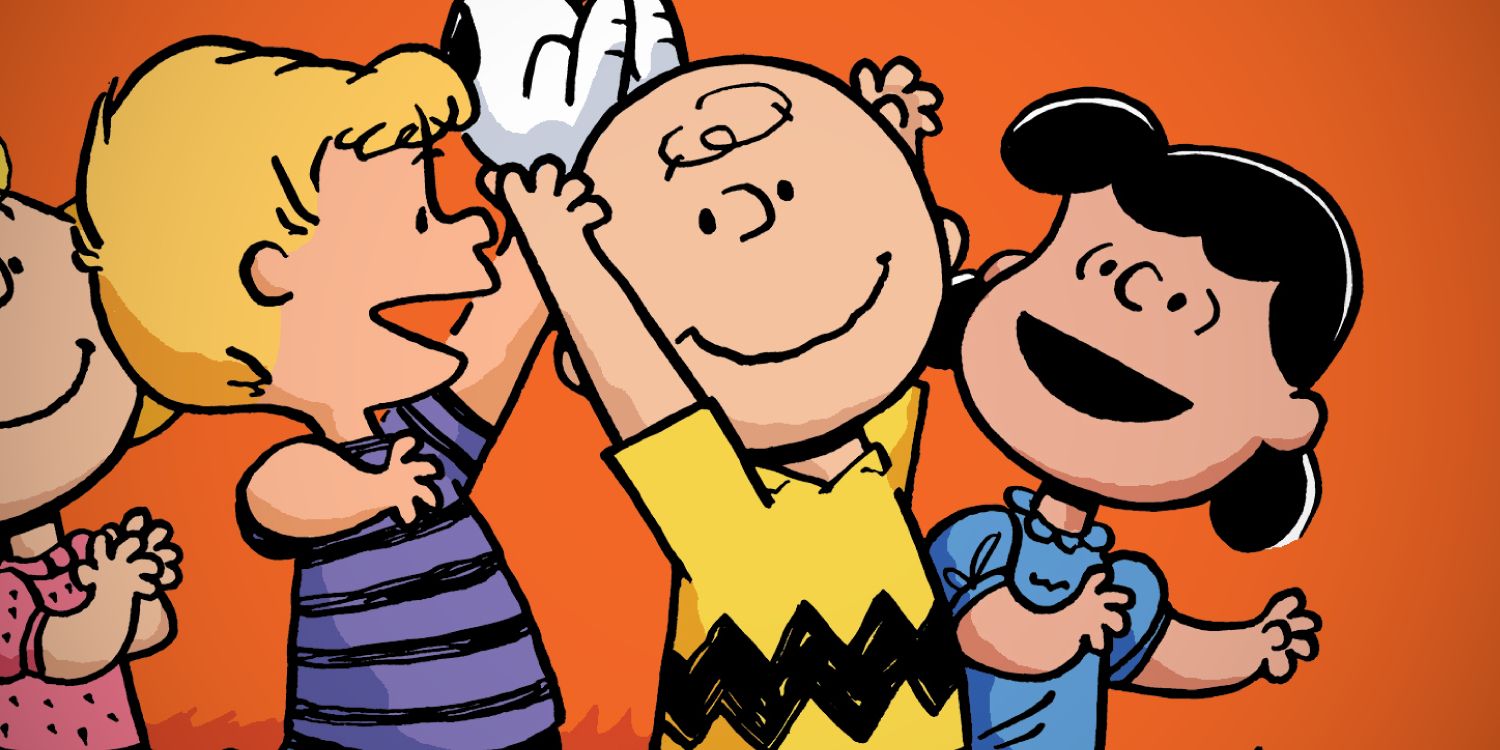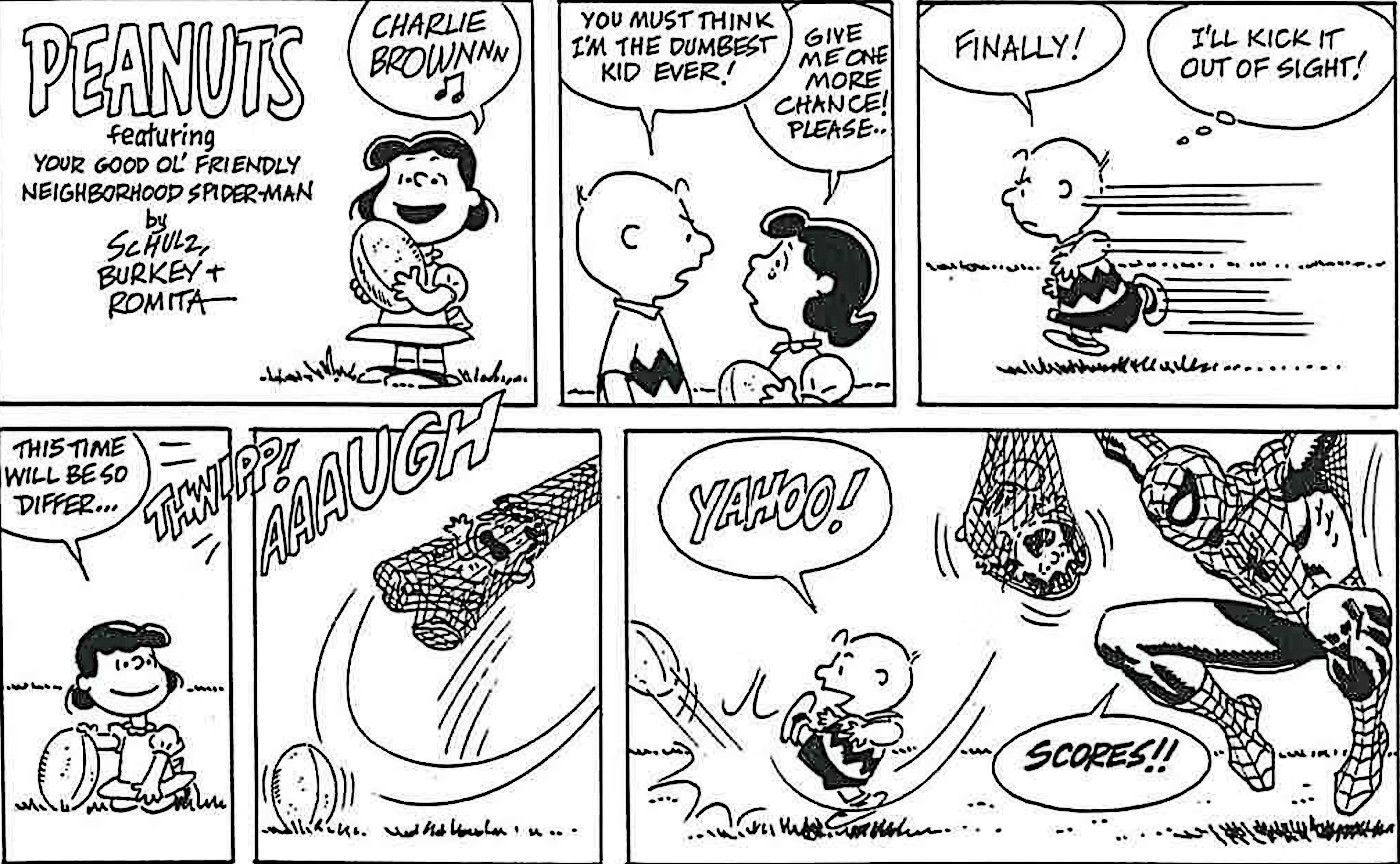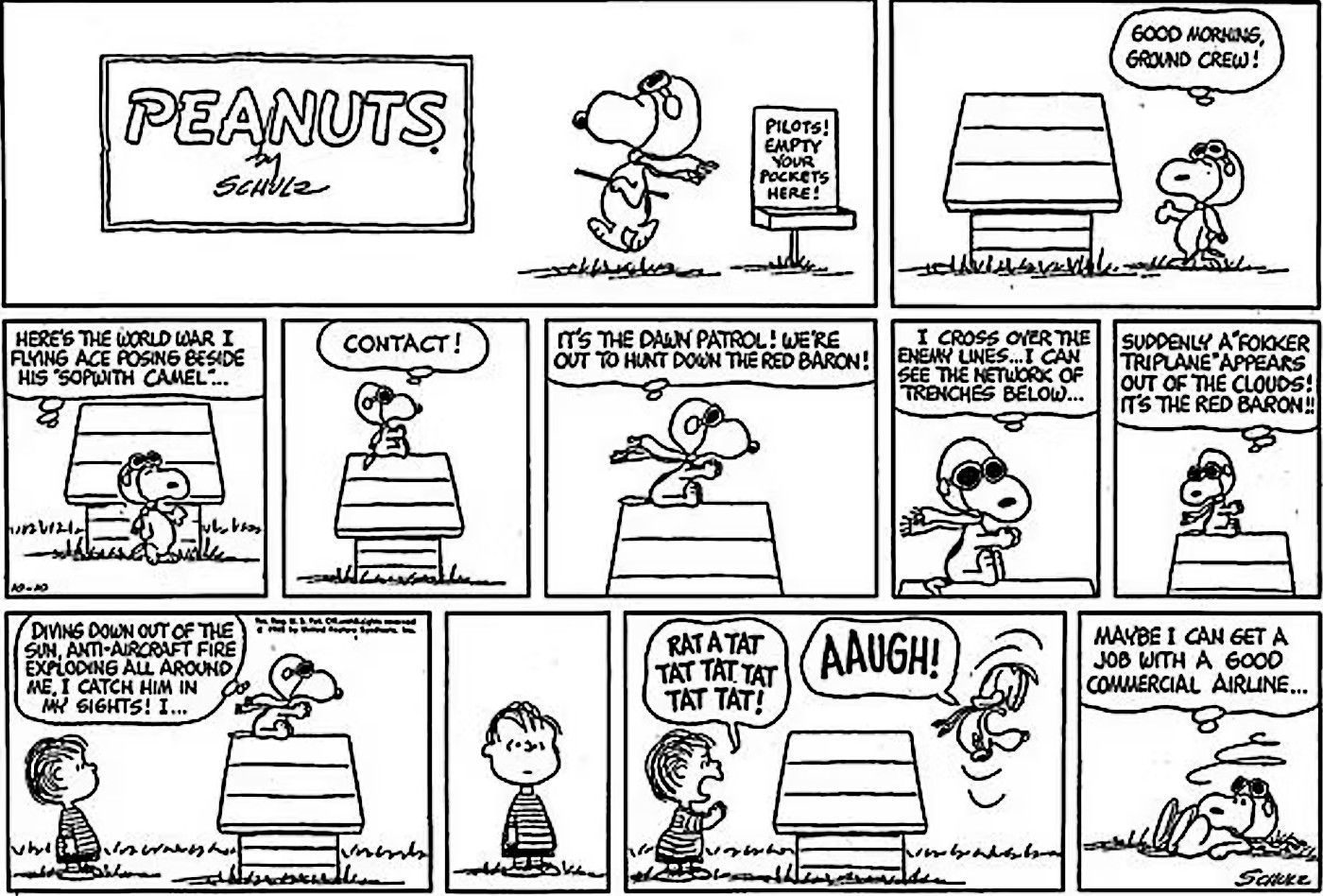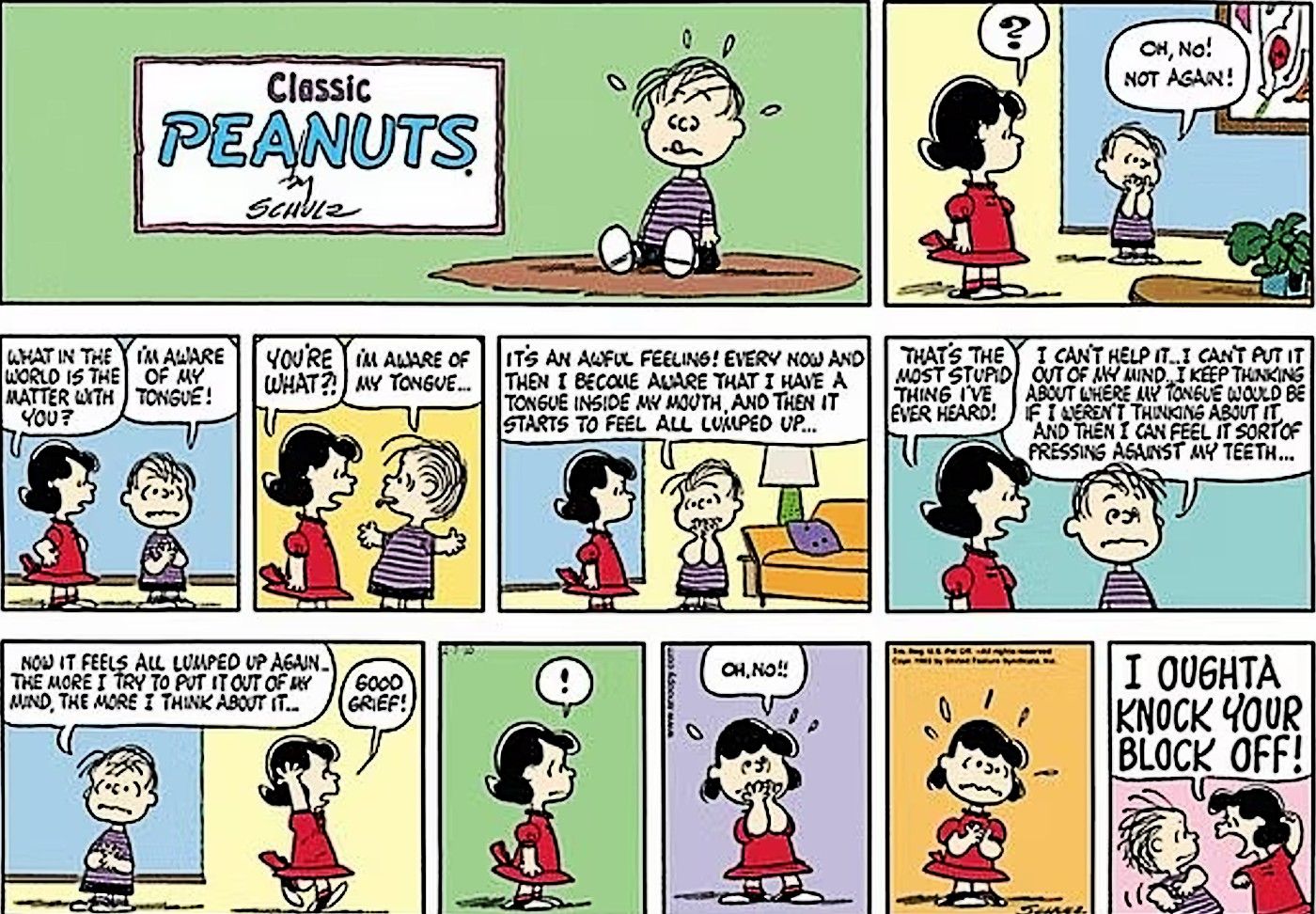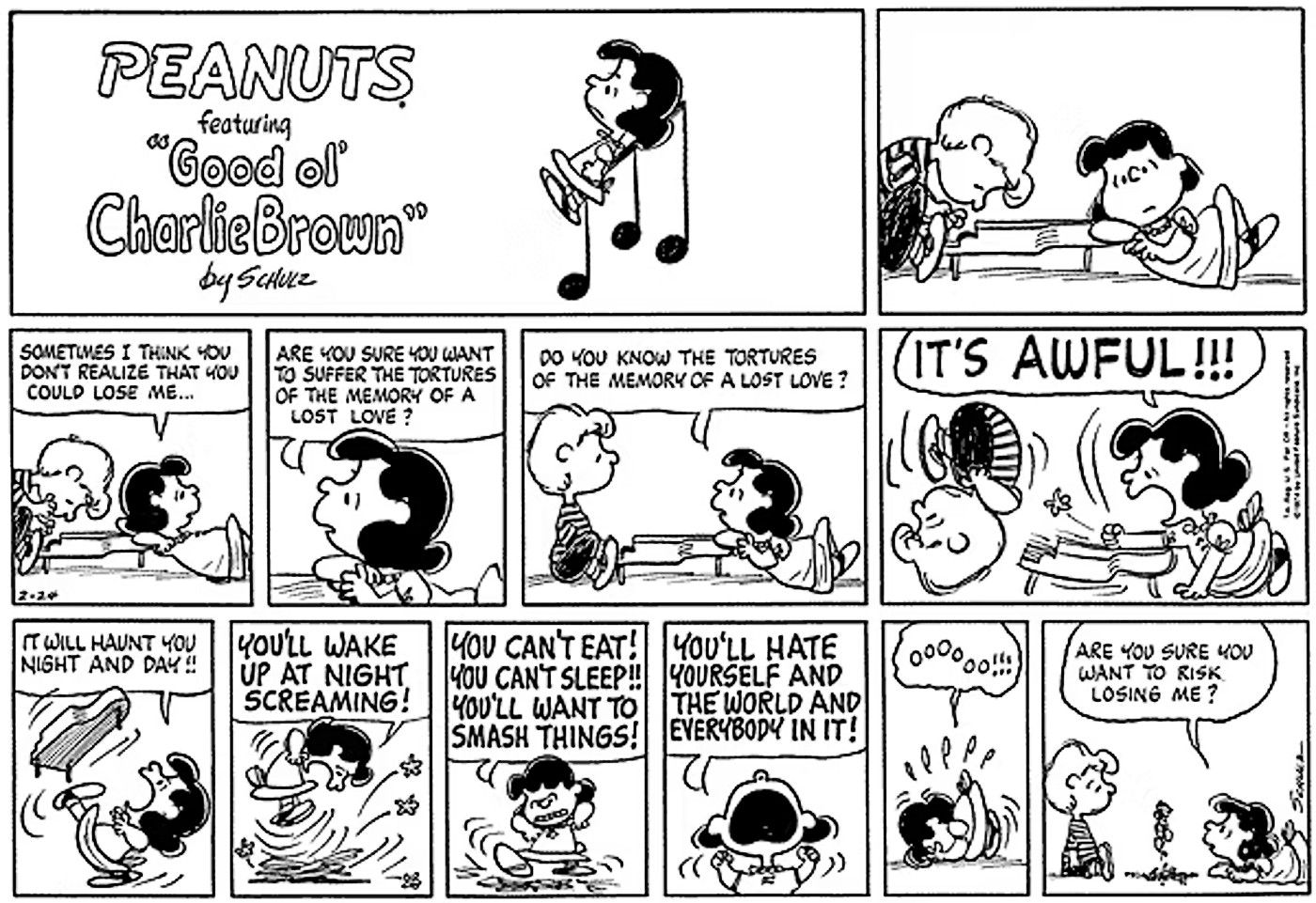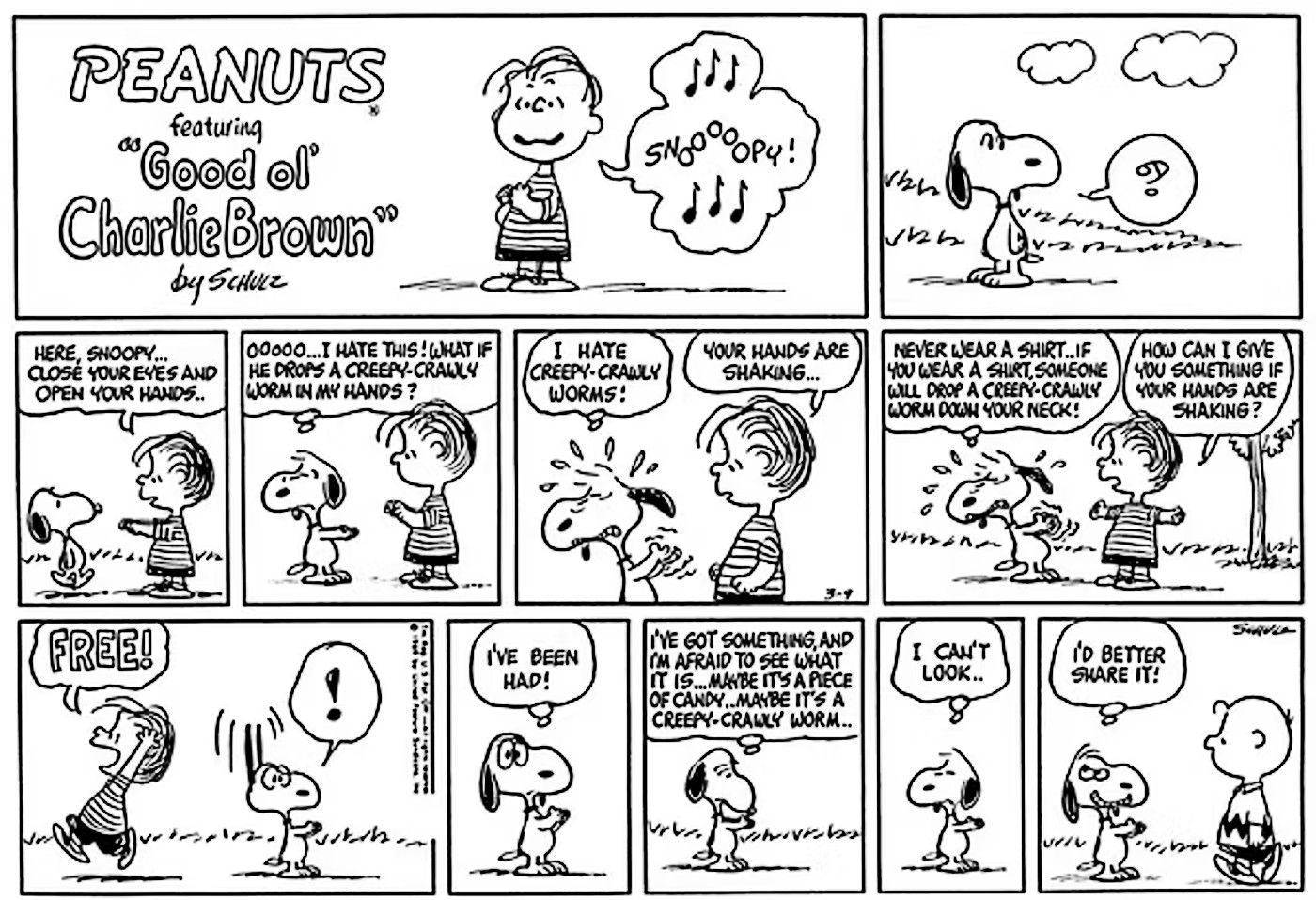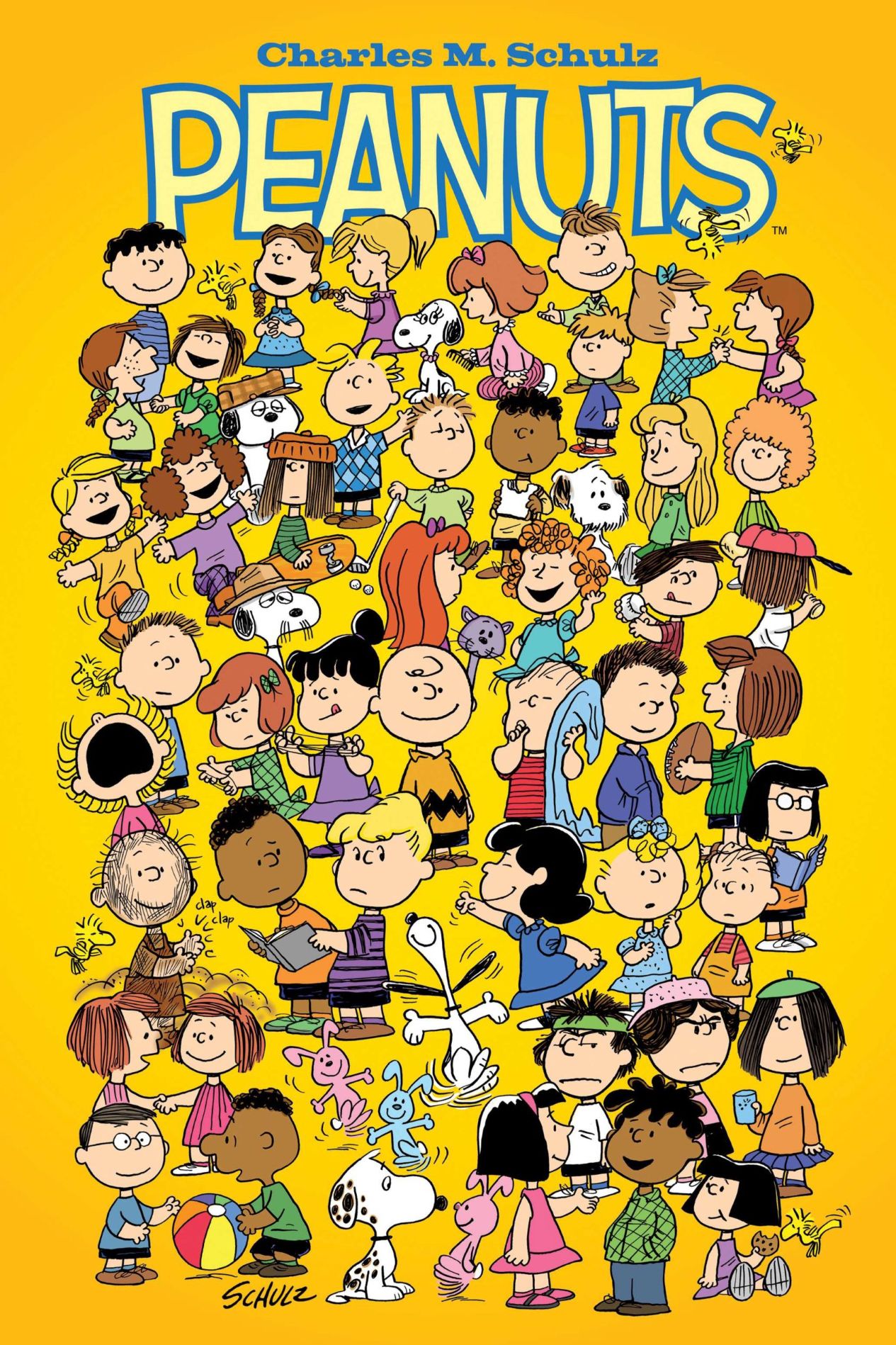Summary
- Charles Schulz' Peanuts comic strip ran from 1950 to 2000, in the process spawning a multimedia sensation, with characters like Charlie Brown, Snoopy, and even the small yellow bird Woodstock becoming worldwide phenomena.
- Peanuts has helped to define the childhoods of generations of fans – from the "football gag," to "Snoopy vs. the Red Baron," to the strip's surprising philosophical underpinnings, the Peanuts Gang have provided countless laughs to audiences over the years.
- Schulz humor in Peanuts was always gentle, and even if his characters could at times be careless, or insensitive – or in the case of Peppermint Patty, just plain clueless – it was always in the service of a life-affirming joke.
While superheroes may be the strongest case of the world's obsession with comic entertainment, they're not alone, as Charlie Brown and his Peanuts world stand on equal footing. Blockbuster comic books aside, the funny pages have had tremendous success in adaptations of various daily newspaper strips, including several Garfield movies, and too many stage and screen versions of Charles Schulz's American staple comic strip to count.
The iconic Life Magazine dubbed Peanuts the world's greatest comic strip of all time, and for good reason. As Charlie Brown and Snoopy's legacies are intergenerational pop culture touchstones, with the reasons why on full display in the greatest Peanuts comics of all time.
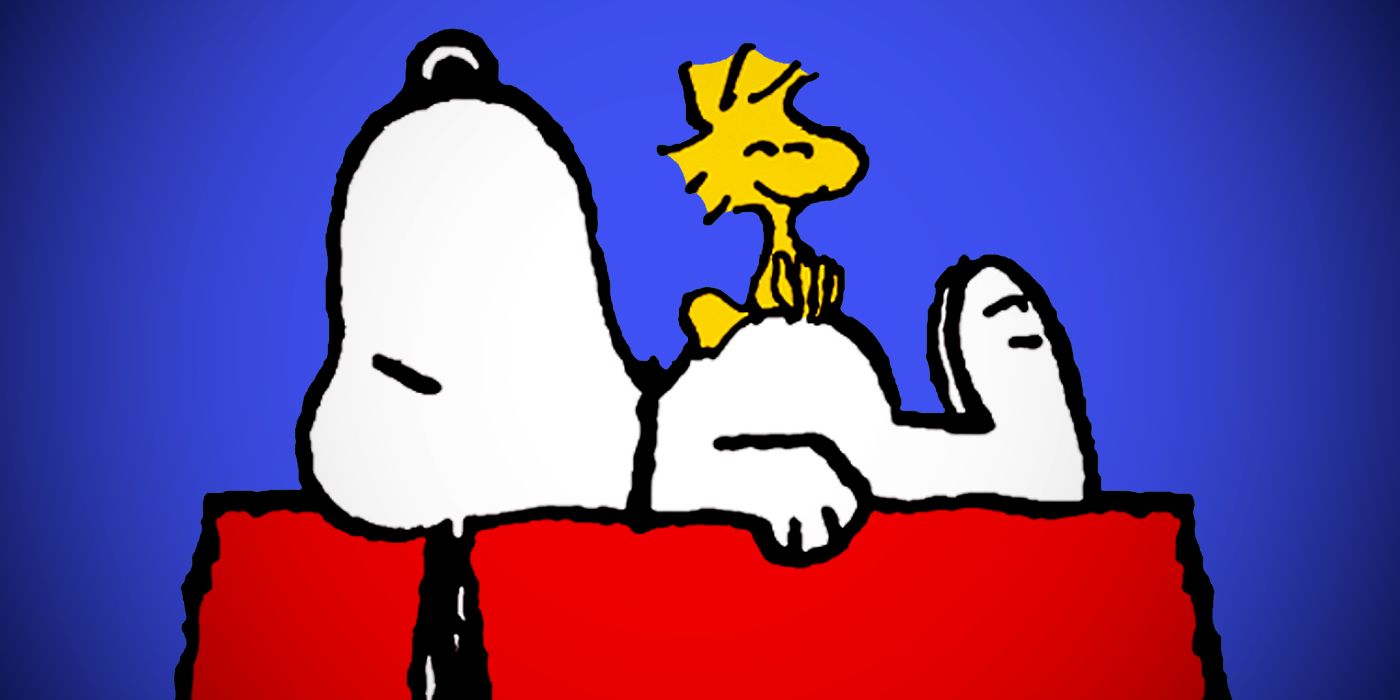
Peanuts: 15 Most Heartwarming Snoopy & Woodstock Best Friend Moments
Best friends forever, Snoopy and Woodstock have warmed the hearts of Peanuts fans for decades thanks to their loyal and loving friendship.The First Peanuts Comic in Charlie Brown History
A World Is Born
Much of Peanuts was an outlet for personal, spiritual, and intellectual expression courtesy of Schulz, reflecting a sense of general Americana, contributing to its eventual mass popularity.
The comic that started it all, way back on October 2, 1950, had its roots in 'Sparky's' (as Schulz was affectionately known) first hometown strip 'Lil' Folks,' but this was the first one published under the Peanuts brand. The simple yet indicative four-panel strip features the first appearances of Charlie Brown himself (sans signature zigzag shirt) and strip regulars Shermy and Patty (not to be confused with Peppermint Patty).
Even as a young cartoonist it became evident Schulz penned good ol' Charlie Brown as a dumping ground for his various neuroses and insecurities. The truth is much of Peanuts was an outlet for personal, spiritual, and intellectual expression courtesy of Schulz, reflecting a sense of general Americana, contributing to its eventual mass popularity.
The Football Gag In All Its Glory
A Test Of Charlie Brown's Faith
The running "football gag" became a longstanding staple of the Peanuts kids' storylines, often showcased in longer panel sonnets on extended Sunday strips. Charlie Brown's persistent blind faith in doing something over and over time after time expecting different results showed Sparky's sense of the futility of existence as well as always having the courage to hope for something better.
In this strip, even Lucy, ever the preying huckster on the affable yet clueless Charlie Brown, comments on his perpetual ability to trust in others despite them having betrayed him countless times. It's also yet another clear sign of Charlie Brown's creator paying homage to the world of sports, which would play a central role throughout 50 years of Peanuts strips.
As synonymous with Lucy as it is, Peanuts' "football gag" actually predates her introduction. Further, the first several times that Lucy pulled the football away from Charlie Brown, it was the result of a misunderstanding. Only as Lucy became the acerbic, at times devious, character readers grew to love did she begin to pull the ball away as a method of perennially tormenting the strip's central character.
Lucy Puts Snoopy In His Place
His Place In The Cosmos
By design, Lucy served as one of Peanuts most challenging characters – that is, she regularly served as the gadfly of the group, keeping her peers from getting too comfortable. Whether it was behind the counter of her psychiatry booth, or serving up unsolicited opinions like in this strip, Lucy always had something to say about the lives of the other Peanuts Gang members.
Here, Snoopy is minding his own business, snoozing on his doghouse roof, when Lucy appears. "You are of no importance, did you know that?" she asks, waking him up, adding: "You are only the tiniest speck in the enormous universe!" Thankfully, while Charlie Brown or Linus might have been perturbed by this assertion, Snoopy's reaction is nonchalant, as he simply goes back to sleep.
A Surprise Marvel Crossover
Charlie Brown Kicks The Ball With An Assist
Yes, it's amazingly true, hard as it is to believe. In a bizarre Marvel crossover with Schulz's perennial strip, John Romita Sr., who sketched a daily Spider-Man newspaper comic strip from 1977 to 1981, responded to a fan request to incorporate Peter Parker's hero alias into helping Charlie Brown finally kick the football.
The result was rendered in Romita Sr.'s signature drawing form, though it was clearly signed off by Schulz as his name appears in the first panel accordingly. The strip itself is a forgotten Easter egg of yore, and it's absolutely hilarious, especially in the panel where Lucy is swept away from holding the football by Spider-Man's trusty webs, capping it off with a 'Score!' exclamation from fellow underdog Parker as Brown finally kicks the sucker.
The Psychiatric Booth Gag Never Got Old
Just Like The Peanuts Gang
One of the many innovative and genius ways Schulz managed to incorporate his frequent existential quandaries into his art was Lucy van Pelt having her own psychiatric booth. Presented in old school lemonade stand style, she charged Charlie Brown five cents a session for his frequent visits, wherein he would usually ponder the nature of his existence in typically sad sack fashion.
Forever immortalized in a sequence of A Charlie Brown Christmas, perhaps Americans' most cherished annual Christmas viewing tradition short of Rudolph the Red-Nosed Reindeer, the recurring psychiatry booth strips featured Lucy usually dropping a basket of stone-cold reality, or ending up making the session about herself, of course. In this strip, she actually gives some astute advice, albeit delivered abrasively in Lucy's way.
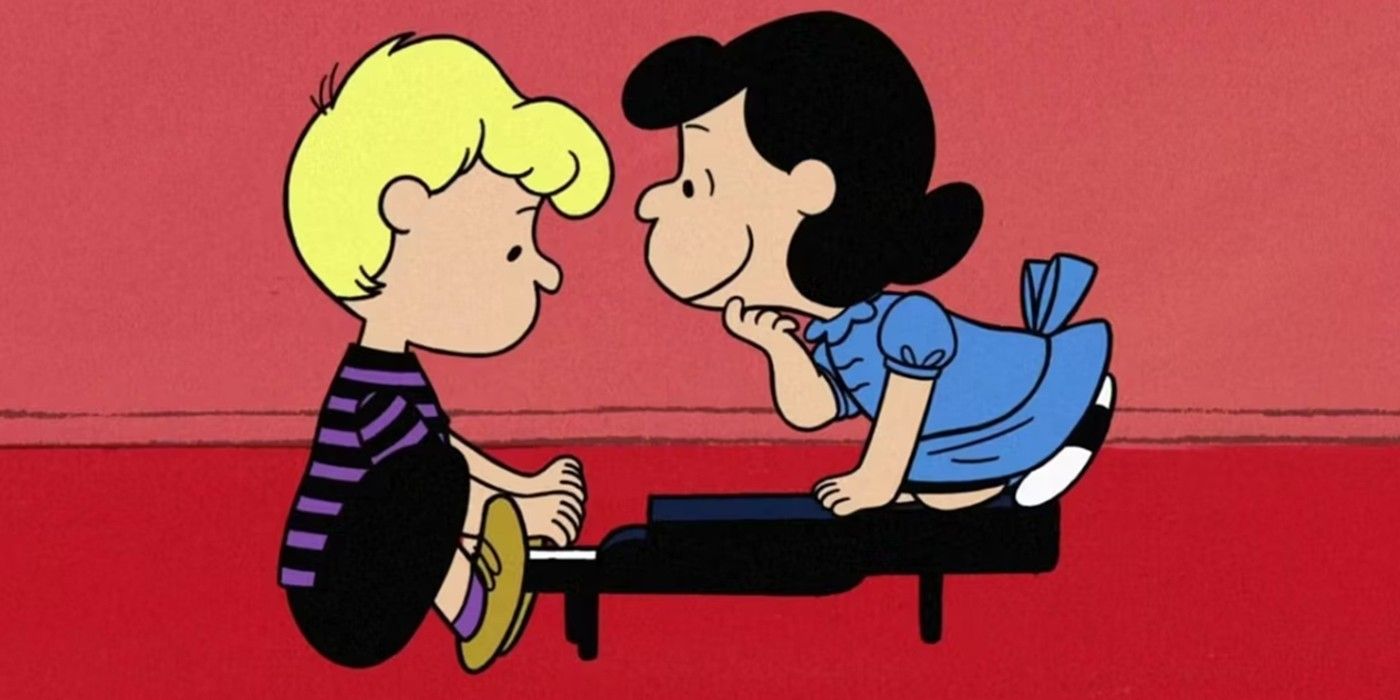
Peanuts: 10 Funniest Lucy & Schroeder Comics
While Lucy may be a thorn in Schroeder's side, her affection for the budding musician leads to some of the best Peanuts strips of all time.Snoopy Vs. The Red Baron Made Peanuts History
Among Charles Schulz' Most Memorable Ideas
Much like Schulz did with his love of sports, he also imbued his Peanuts comics with essences of his past military service, particularly the loneliness he found while in the Army for three years. As a staff sergeant in World War II, he participated in the liberation of the Daschau concentration camp and the occupation of Munich.
Schulz was a big history buff concerning the first World War, and so gave Snoopy one of his most endearing fantasy operas, that of a Sopwith Camel Allied Force ace fighter pilot strafing the German air calvary, mostly facing off in his rivalry with nemesis the Red Baron.
These strips were lovingly brought to life in live animation during the events of the significantly revered
Peanuts holiday special, It's the Great Pumpkin, Charlie Brown.
The World Keeps Spinning
Just Stay In Bed, Chuck
The world's indifference to Charlie Brown was often a source of amusement throughout Peanuts' enduring run. In the real world, readers quickly fell in love with Chuck, and the rest of his cohort. In the strip, he was often portrayed as an ordinary, and at times even forgettable kid.
That is played for maximum laughs here, in a strip that finds Charle Brown tucked into bed, asking his sister Sally to "go tell the world I'm ready to get up." Dutifully, she proceeds to go outside, only to return and tell him: "Not a single person cared." The joke here, of course, hinges on the idea that Charlie Brown thinks anyone would care – only to be soundly discouraged of this notion when Sally reports back.
Linus Is The Heart And Soul Beneath All Peanuts' Neuroticism
All Lucy Needed Was A Hug
In Freudian terms, it's fairly easy to see how Charlie Brown is Schulz's ego, Snoopy is his id, and Linus is his super-ego. Throughout the series, Lucy's younger brother and Charlie Brown's best friend Linus is the sole child who manages to elicit consistent rational rhetoric, often spiritual and philosophical in nature, including his blind faith in pumpkin patch sincerity to elicit the Great Pumpkin's attention.
Not unlike his other comparably ethereal counterparts in animation ensembles like Lisa in The Simpsons or Brian in Family Guy, Linus often offers a more grounded and reasonable perspective on the usual cartoon antics, like in this strip where he diffuses Lucy's ongoing bitterness with a simple expression of love, or when he famously relays the true meaning of Christmas, "Lights, please?" in the annual Christmas special.
Lucy Is More Impressionable Than She Lets On
Linus Got To Her
One of Sparky's greatest secrets was his ability to weave commonplace conundrums into his characters' dialogues that often go unsaid in real life, yet ring oh so true when explicitly noted. Frequent examples of this in Peanuts might be Snoopy's hunger and his suppertime routines, Sally's homework blues, Charlie Brown's baseball card trading, or Linus' rudimentary observations of everyday happenings.
One such example comes in this classic strip, where he notes the awareness of his tongue, inadvertently passing that earworm along to his older sister. Schultz often managed to capture ordinary slices of life in this manner, further exploring through his dry humor the many foibles and quirks of what it means to be human.
Unrequited Love Is Essential To Peanuts
Creator Charles Schulz' Had A Big Heart
In many of the strips showcasing the preadolescent angst of his characters, Schultz renders a heart-on-sleeve examination of his own broken heart laid bare.
Unrequited love might be the most persistent and pervasive theme across the entirety of the Peanuts spectrum. Schulz's proclivity for rendering the finer points of one-sided feelings was profoundly sourced from the difficulties of his connections to women in real life, especially in his childhood tweens and teens.
Unrequited love reigns across virtually all of his Peanuts character lives, from Lucy's infatuation with Schroeder to Sally's crush on Linus to Charlie Brown's desperate one-sided feelings for the little redheaded girl. In many of the strips showcasing the preadolescent angst of his characters, Schultz renders a heart-on-sleeve examination of his own broken heart laid bare.
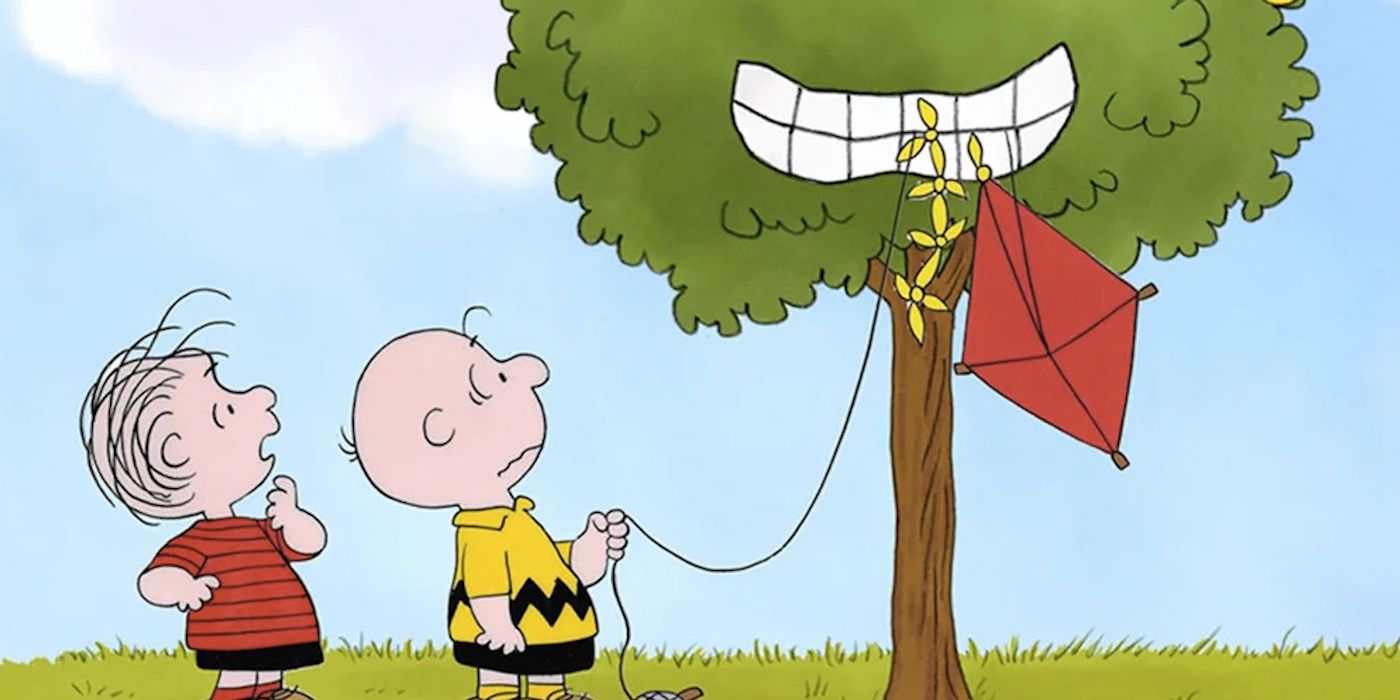
10 Funniest Peanuts Comics Where Charlie Brown Takes On The Kite-Eating Tree
Charlie Brown tries his best to reason (and argue) with the relentless Kite-Eating Tree in these side-splitting Peanuts comics, to no avail.Snoopy's Brother Was One Of Peanuts Weirdest Characters
Even Charles Schulz Knew It
While Snoopy and his antics are rightly iconic, even many long-time Peanut fans might have forgotten that Snoopy had an extended family, a number of whom made regular appearances in the strip over the years. Chief among them was Snoopy's brother Spike, who had what is without a doubt one of the quirkiest recurring bits in Peanuts history.
Spike was frequently depicted in the desert, talking to a cactus as though it were a friend. At times, Spike exhibited a hilarious self-awareness of how strange this behavior was – as is the case in this strip, in which he asks the cactus to bring him a pizza if it ever goes into town, before thinking: "I lead a really, really, really, really stupid life."
Marcie & Peppermint Patty Were Responsible For Some Of Peanuts Funniest Bits
Name A More Underrated Duo
Peanuts long-running success can be attributed to the depth of the strip's cast – as much as readers came for Charlie Brown and Snoopy, they kept reading zaney running gags and plots like the relationship between Marcie and Peppermint Patty. Their character dynamic was among Peanuts' most idiosyncratic, and resulted in some of the strip's most absurd punchlines.
This is just one great example, as an attempt by Marcie to compare notes in class makes it clear that Patty was not paying attention to the lesson. The comedy in this strip comes from the fact that Marcie nevertheless seems in awe of her friend, who steadfastly, if quixotically, replies: "Never let 'em know where you're coming from."
Prior to Peppermint Patty's introduction to the rest of the Peanuts Gang, she was preceded by another character named Patty. Unfortunately for this earlier Patty, once Peppermint became one of the most memorable characters, the original faded into the background, and ultimately stopped appearing altogether.
The Perfection Of The Multipanel Comic Strip
The Medium Reaches New Heights
Due to its simplicity, established canon world, and rooted character development, Peanuts became the alpha omega example of how to precisely render the juxtaposition of cartoon art and humor in the daily newspaper comic strip medium. Schulz could easily establish his message or gag of the day whether it was a weekday four panel or a Sunday multi panel offering.
Sparky maintained the strip depicted here was probably one of his favorite Sunday strips, and it's easy to see why, what with the slow burn prank setup initiated by the usually morally stalwart Linus, the handoff to a clearly disturbed Snoopy, and culminating in one of the more outrageously hilarious Snoopy facial expressions of the ever emotive hound dog as he plans to pay it forward to owner Charlie Brown.
Sally Brown, Modern Philosopher
Misunderstood In Her Own Time
Peanuts was often at the peak of its humor when its adolescent characters touched upon a deeper question, or perspective on reality, as was often the case with Charles Schulz' humor.
In one of Peanuts' funniest Sally Brown strips, Charlie Brown's younger sister tells him: "Wolves are making a comeback...that's my new philosophy." When he's understandable puzzled by her extremely esoteric statement, she points out that "no one ever really understands a new philosophy."
Peanuts was often at the peak of its humor when its adolescent characters touched upon a deeper question, or perspective on reality, as was often the case with Charles Schulz' humor. Here, he subtly lampoons the pursuit of philosophy as a whole, especially with the strip's punchline, in which Sally repeats her statement and Charlie Brown amends his response, now stating: "Yes, there's a lot of truth in that."
Happiness Is A Warm Puppy
Accept No Substitutes
Unquestionably the world's most famously known Peanuts comic strip, 'Happiness is a warm puppy' became a cultural phenomenon in the 1960s, where a book of the same name showcasing the entire Peanuts gang in alternating states of what made them happy became an instant bestseller. It is often recalled as fans' favorite daily because there's no clever pun to be filtered or interpreted, and it's a scarce Schulz example of requited love rather than the opposite.
It elicits many humans' absolute love of dogs and the base need to find a true if brief moment of actual peace and happiness. The fact that Schulz has his most crabby and petulant character relay the message of hope makes it all the more sweet.

